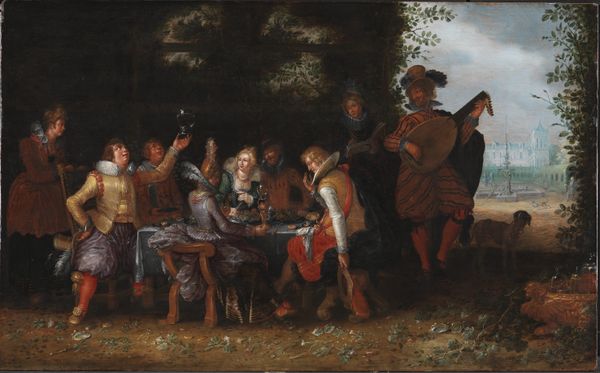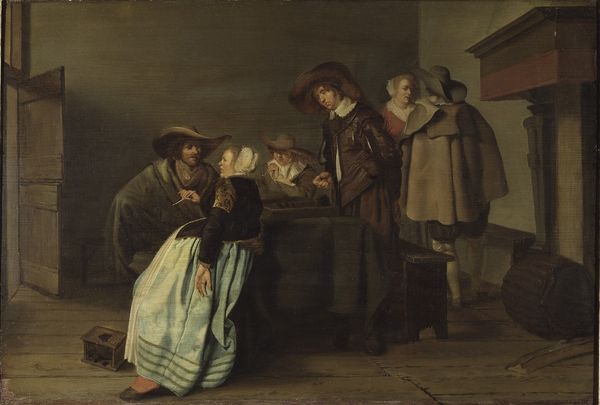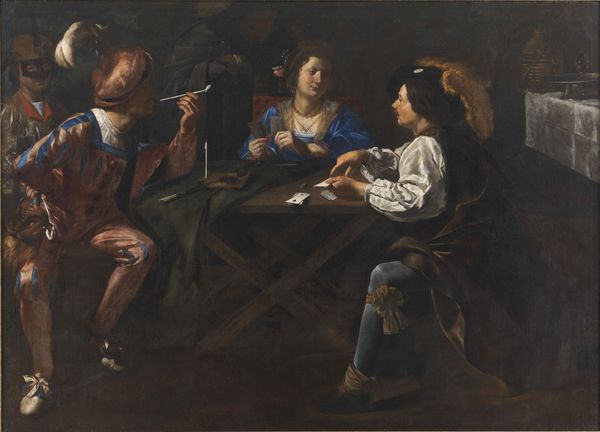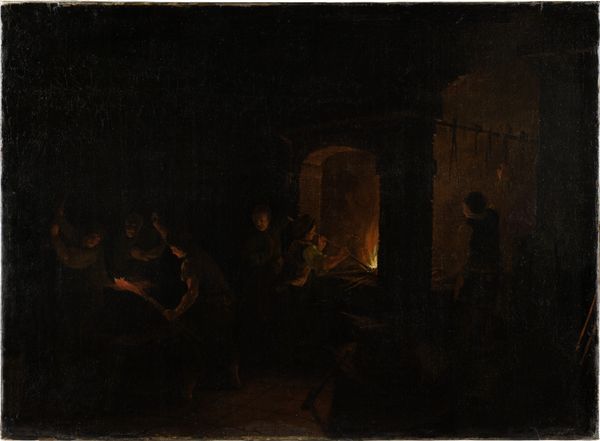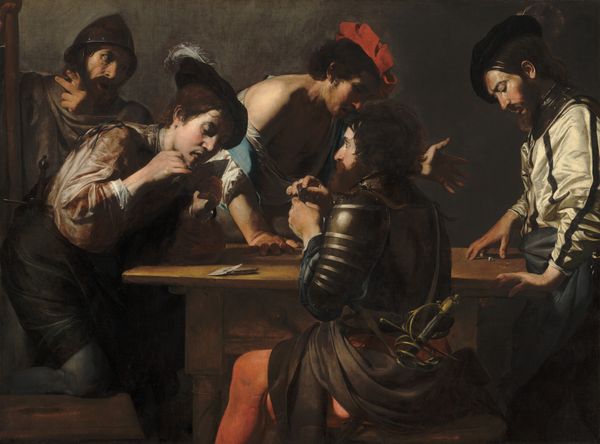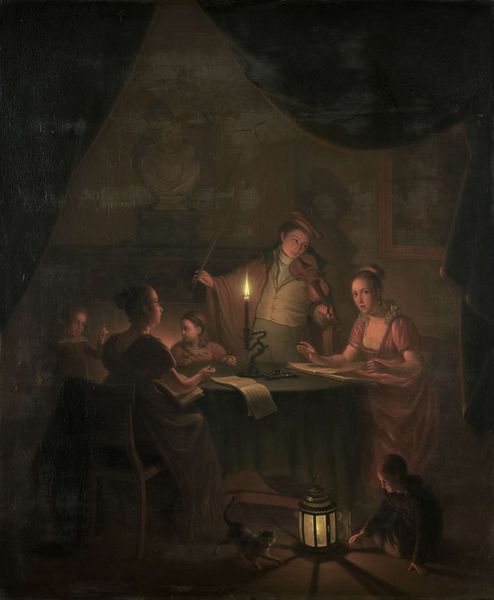
panel, painting, oil-paint, canvas
#
panel
#
narrative-art
#
baroque
#
dutch-golden-age
#
painting
#
oil-paint
#
figuration
#
canvas
#
chiaroscuro
#
genre-painting
#
realism
Dimensions: 93.5 cm (height) x 108 cm (width) (Netto)
Curator: Standing before us is Wolfgang Heimbach’s "Evening Interior," painted in 1651. It’s rendered with oil paint on panel and exemplifies Dutch Golden Age painting. Editor: My initial impression is of shadowy intrigue, like peering into a clandestine gathering. The artist uses dramatic chiaroscuro; some figures are lit so brightly, while others fade into the gloom. Curator: Absolutely. Heimbach masterfully deploys chiaroscuro, pulling focus onto distinct groupings. Structurally, we can observe the composition unfolding in layered planes, from the card players to a secondary space with what seems to be a crowd of people illuminated further in the back. Editor: Right, this secondary scene feels less like an extension of the same room and more like a glimpse into a parallel world. Perhaps reflecting social structures, where power and secrecy dwell just behind the scenes. Genre paintings, such as this, offered viewers narrative insight into a social history, revealing a scene from domestic, and in this case potentially controversial, affairs. Curator: From a formalist viewpoint, note how light almost sculpts the subjects, highlighting the textural details of their garments and faces. Heimbach uses the materiality of light itself to signify importance. The intense contrast, for example, around the central man reading signifies some authority, separating him visually from the gamblers on the left. Editor: And that authority perhaps reflects the moral anxieties around gambling prevalent during this period. The artist doesn’t seem to overtly condemn or condone; instead, Heimbach’s painting encourages consideration about the ethics involved. These interior scenes offered commentary on societal behaviors during the era. Curator: A key technique here is the arrangement of bodies; it controls the overall viewing experience, drawing the viewer deeper into the subject matter with light and shadow acting as a kind of symbolic syntax. We are drawn toward the source of reading with curiosity and perhaps cautious skepticism. Editor: Indeed, art offered some social critique within the comfortable realm of genre-painting, allowing discourse on cultural tendencies while giving an open ending on how things “should be.” Heimbach prompts discourse through carefully rendered light and form, inviting debate about what goes on behind closed doors. Curator: It’s interesting how Heimbach guides us as viewers through compositional decisions and through a sophisticated visual narrative, urging us to draw connections within the picture itself. Editor: And in doing so, provides the museum space to act as a modern site for continuation of similar conversations.
Comments
No comments
Be the first to comment and join the conversation on the ultimate creative platform.
